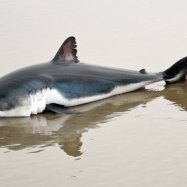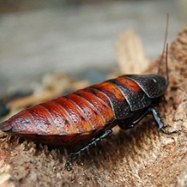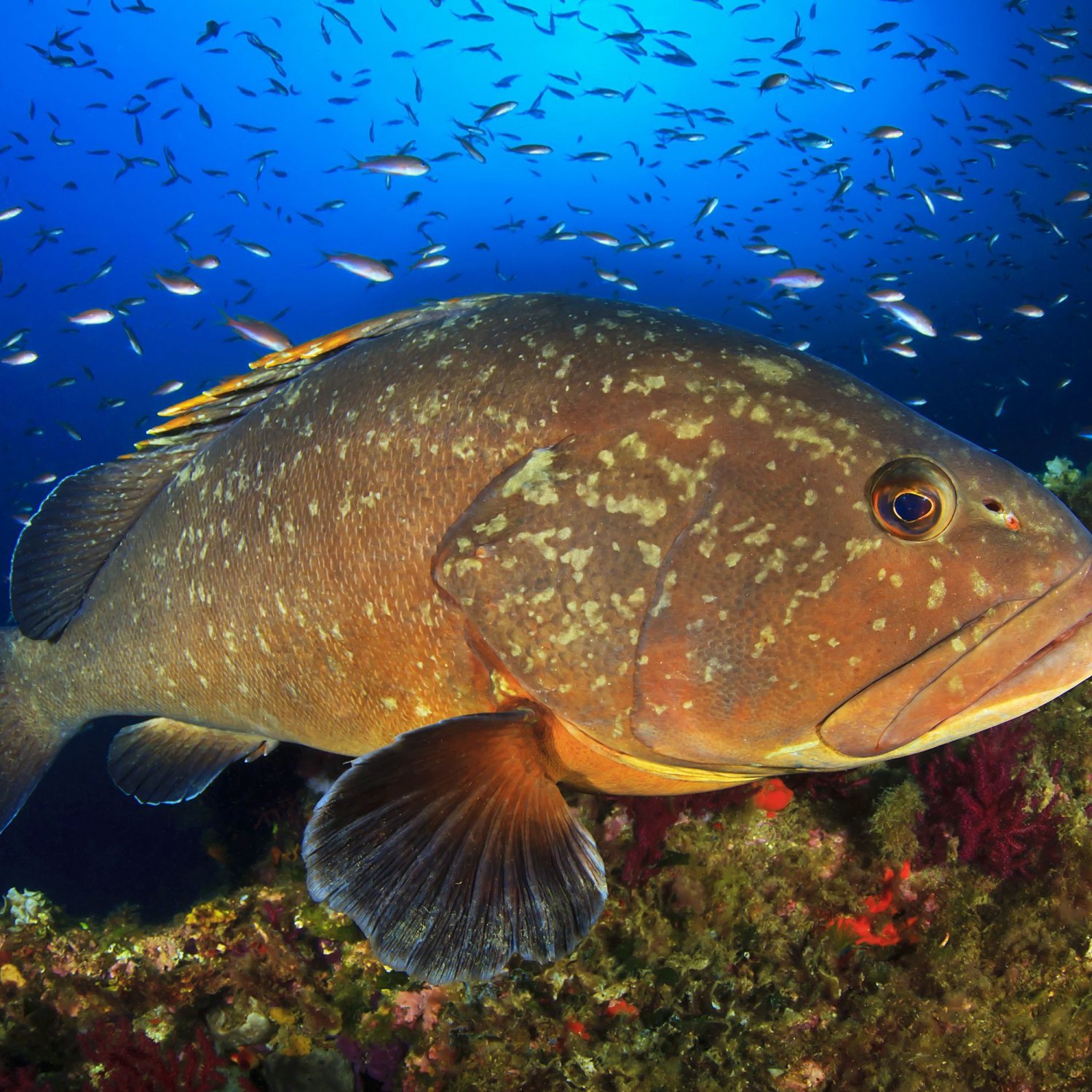
Grouper
Varies by species
Grouper: A popular fish in worldwide markets, the Grouper comes in a variety of species with varying lengths. Belonging to the Serranidae family, they are known for their robust and elongated body shape. Whether you're a seafood lover or a marine enthusiast, spotting a Grouper in the wild is always a treat! #Grouper #Serranidae #SeafoodLove #MarineLife
Animal Details Summary:
Common Name: Grouper
Kingdom: Animalia
Habitat: Marine
The Fascinating World of Groupers
Groupers are a fascinating and highly diverse group of fish found in marine habitats around the world. From their unique body shapes and coloring to their carnivorous feeding method, these fish have captured the curiosity of both scientists and the general public alike. Let's dive into the world of groupers and discover what makes them such a special species.Scientific Classification
Before we delve into the details of these captivating creatures, let's first take a look at their scientific classification Grouper. The scientific name for groupers is Epinephelinae, which is a subfamily of the Serranidae family. They belong to the phylum Chordata, class Actinopterygii, and order Perciformes, making them closely related to other fish such as tuna and mackerel.Appearance
Groupers come in a wide variety of shapes, sizes, and colors, with over 160 known species. They range from small-sized groupers like the Hawaiian Grouper, which grows up to 10 inches in length, to the massive Goliath Grouper, which can reach sizes of over 8 feet in length and weigh up to 800 pounds. However, most groupers fall somewhere in between, with an average length of 3 feet.One of the most striking features of groupers is their robust and elongated body shape. This unique body shape allows them to swim effortlessly through the water and exert more power when hunting prey. They also have large mouths with thick, full lips, which they use to catch and swallow their prey whole.
The coloring of groupers varies greatly among the different species, and they have the ability to change their coloration to blend in with their surroundings Golden Shepherd. This makes them highly adaptable to various marine environments, and some species use this as a camouflage to protect themselves from predators.
Habitat and Distribution
Groupers are found in tropical and subtropical waters around the world, making them a well-traveled species. They inhabit a wide range of marine environments, including coral reefs, shipwrecks, rocky areas, and seagrass beds. However, some species, such as the Snowy Grouper, can also be found in deeper waters up to 1,000 feet below the surface.The geographical distribution of groupers varies by species, with some being more widespread than others. The Nassau Grouper, for example, can be found in the Western Atlantic Ocean, from Florida to Brazil, while the Yellowfin Grouper can be found in the Indo-Pacific region, from East Africa to Polynesia.
Feeding Habits
Groupers are carnivorous fish, meaning they rely on a diet of other marine animals to survive. They are opportunistic hunters, using their large mouths and powerful bodies to ambush their prey. Some species, such as the Black Grouper, are nocturnal hunters and feed primarily at night, while others, like the Red Grouper, are more active during the day.Their diet varies depending on the species and their habitat. Some groupers feed on smaller fish, crustaceans, and cephalopods, while larger groupers like the Goliath Grouper can even prey on sharks and rays. This varied diet allows them to play a crucial role in the marine food chain, keeping populations of their prey in check.
Country of Origin
As mentioned earlier, the geographical distribution of groupers varies by species. This is due to the fact that groupers are found in almost all major marine regions around the world, from the Atlantic, Pacific, and Indian Oceans to the Mediterranean Sea. Each species has its own unique country of origin, making them a truly global fish.Threats to Survival
Despite the wide distribution of groupers, they face numerous threats to their survival. Overfishing is a significant concern, as groupers are highly valued in the food and seafood trade. This, coupled with their slow growth rate and long reproductive cycles, makes them particularly vulnerable to population decline.Other threats include habitat destruction due to climate change, pollution, and destructive fishing practices such as bottom trawling. In some areas, groupers are also targeted by humans for their recreational and commercial value, and this can have a detrimental impact on their populations.
Conservation Efforts
Thankfully, efforts are being made to protect and conserve groupers around the world. Many countries have implemented strict fishing regulations to prevent overfishing, such as size limits and fishing quotas. Some regions have also established marine protected areas, where groupers and other marine species can flourish without human interference.Furthermore, research is being conducted to better understand the biology and behavior of groupers, which can help inform conservation strategies. For instance, scientists are studying the reproductive habits of groupers to determine the best ways to ensure their populations continue to thrive.
The Role of Groupers in the Marine Ecosystem
Groupers play a crucial role in maintaining the balance of the marine ecosystem. As predators, they keep populations of their prey in check, preventing any one species from dominating an area. This, in turn, leads to a healthier and more diverse marine environment.Groupers also help maintain healthy coral reef systems. As they feed on smaller fish and invertebrates, they prevent these populations from overgrazing on the coral, which can lead to reef degradation. This is why groupers are commonly referred to as the "guardians of the reef."
The Human-Grouper Relationship
Humans have had a long and complicated relationship with groupers. Some cultures have revered them as a source of food and medicine, while others have used them as a symbol of power and strength. In ancient Greece, for example, groupers were considered a delicacy and were believed to have healing properties.In contrast, modern-day fishing practices and overexploitation have caused some grouper species to become threatened or endangered. However, as we become more aware of the importance of conservation, the relationship between humans and groupers is starting to shift in a more positive direction.
Interesting Facts About Groupers
- The Goliath Grouper is the largest of all the grouper species and is known for its massive size and fierce strength.- Some groupers can change their sex as they age. Some start off as females and later change to males, while others start as males and later become females.
- Groupers can produce a unique grunting sound by vibrating their swim bladder, which allows them to communicate with other groupers.
- The Maori tribe of New Zealand holds a strong spiritual connection to the Hapuku Grouper and regards it as a sacred guardian of the ocean.
- The Nassau Grouper is known for its unique spawning behavior, where hundreds of groupers gather in one place to release their eggs and sperm into the water column simultaneously.
In Summary
Groupers are magnificent creatures that have captured our imagination for centuries. From their diverse appearance to their important role in the marine ecosystem, these fish are truly one of a kind. As we continue to learn more about them and take steps to protect their populations, we can ensure that groupers remain a vital part of our oceans for generations to come.

Grouper
Animal Details Grouper - Scientific Name: Epinephelinae
- Category: Animals G
- Scientific Name: Epinephelinae
- Common Name: Grouper
- Kingdom: Animalia
- Phylum: Chordata
- Class: Actinopterygii
- Order: Perciformes
- Family: Serranidae
- Habitat: Marine
- Feeding Method: Carnivorous
- Geographical Distribution: Tropical and subtropical waters
- Country of Origin: Varies by species
- Location: Worldwide
- Animal Coloration: Varies by species
- Body Shape: Robust and elongated
- Length: Varies by species
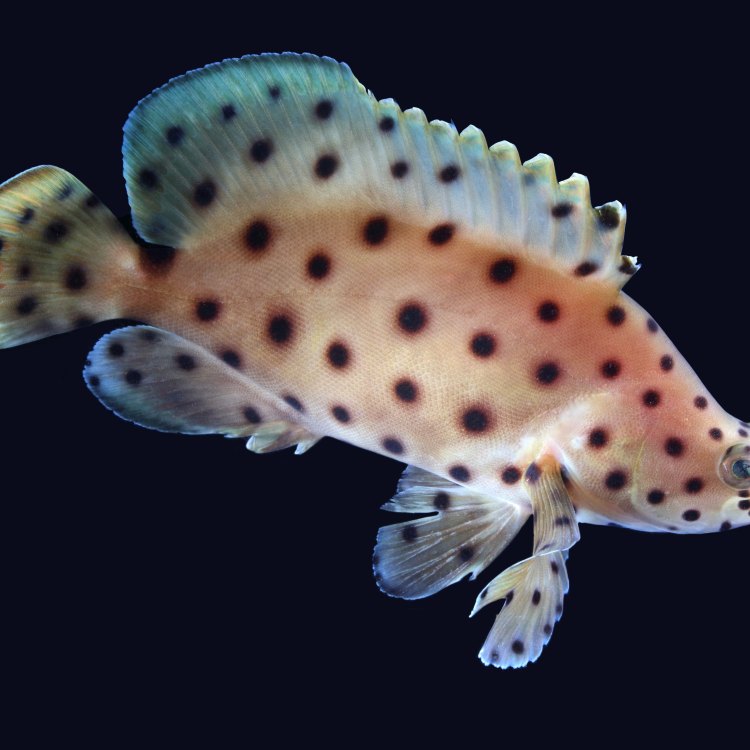
Grouper
- Adult Size: 2 to 8 feet
- Average Lifespan: Up to 50 years
- Reproduction: Sexual
- Reproductive Behavior: Group spawning
- Sound or Call: Varies by species
- Migration Pattern: Varies by species
- Social Groups: Solitary or in groups
- Behavior: Predatory
- Threats: Overfishing, habitat destruction
- Conservation Status: Varies by species
- Impact on Ecosystem: Important predators in marine ecosystems
- Human Use: Commercial and recreational fishing
- Distinctive Features: Large mouth, powerful jaws
- Interesting Facts: Some species are capable of changing sex
- Predator: Varies by species
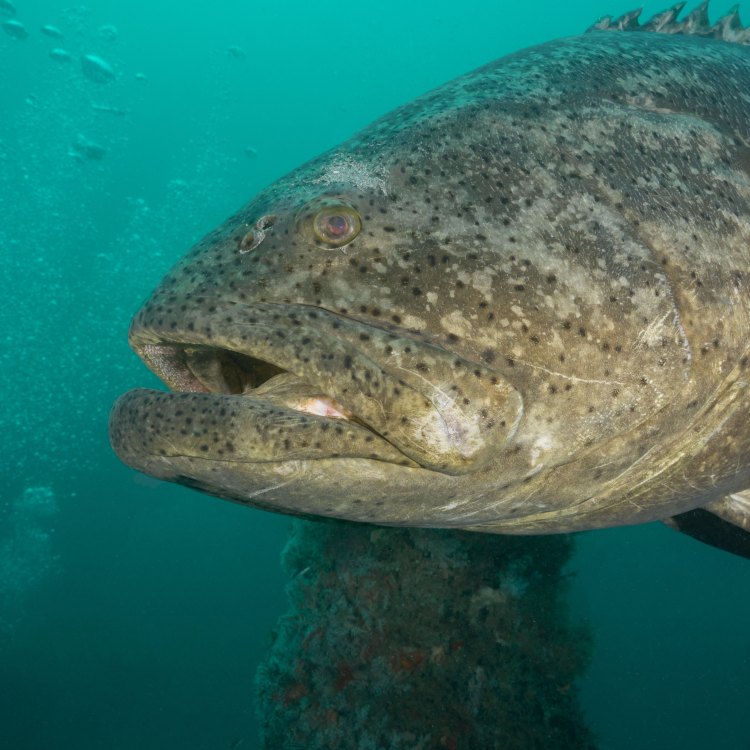
Epinephelinae
Grouper: The Large and Long-Lived Predators of the Ocean
As you dive into the depths of the ocean, you may come across a formidable creature with a large mouth and powerful jaws - the grouper. These fish are known for their size and longevity, as well as their crucial role in marine ecosystems. Join us as we explore the unique features and interesting facts of the grouper, and learn more about these fascinating predators of the sea.Size and Lifespan
Grouper fish can range in size from 2 to 8 feet, depending on the species PeaceOfAnimals.Com. Some of the largest species, such as the Atlantic goliath grouper, can reach up to 8 feet long and weigh over 800 pounds. This makes them one of the largest bony fish in the ocean. Their large size is due to their slow growth rate, as they can take up to 5 years to reach sexual maturity.
In addition to their impressive size, grouper fish are also known for their long lifespan. On average, they can live up to 50 years in the wild. This is due to their slow growth and reproductive rate, as well as their ability to avoid predators. However, their long lifespan also makes them vulnerable to overfishing and habitat destruction, which are major threats to their survival.
Reproduction and Behavior
As with most fish, grouper reproduce through sexual reproduction. However, what sets them apart is their unique reproductive behavior - group spawning German Sheppit. During the breeding season, which varies by species, mature male and female groupers come together in large groups to release their eggs and sperm simultaneously. This increases the chances of successful fertilization and increases the survival rate of their offspring.
Socially, grouper fish can either be solitary or live in groups. Some species are known to form harems, where one dominant male mates with a group of females. Others can form large aggregations, where multiple males compete for mating opportunities. This social behavior also helps in their survival, as groupers are more effective hunters when they work together.
Sound and Migration
Sound is an important aspect of communication and hunting for many marine creatures, and groupers are no exception. However, the specific sounds or calls of each species can vary. Some produce grunts, moans, or booming sounds, while others make low-frequency rumbling sounds. These vocalizations are used to attract mates, establish territory, or gather food.
Migration patterns also vary among grouper species. Some are sedentary, staying in the same area for their entire lives. Others are more mobile and may move between different habitats or even migrate long distances. For example, the Nassau grouper, found in the Caribbean, migrates up to 100 miles to gather in large spawning groups.
Predation and Threats
As predators, groupers play a crucial role in maintaining the balance of marine ecosystems. They have a diverse diet, feeding on a variety of fish, crustaceans, and other invertebrates. Their large mouths and powerful jaws allow them to ambush and catch their prey with ease. This makes them top predators in their habitats, controlling the populations of smaller fish and keeping the ecosystem in check.
However, the grouper's position as a powerful predator also makes them vulnerable to overfishing. For many years, they have been prized by commercial and recreational fishermen for their size and taste. As a result, many species of grouper have suffered from severe population declines, some to the point of endangerment. Additionally, habitat destruction, such as coral reefs, can also have a negative impact on grouper populations.
Conservation Status and Ecosystem Impact
The conservation status of grouper species varies, with some being classified as endangered or critically endangered, while others are considered of least concern. This is due to the fact that different species exist in different regions and are facing various threats. For example, the Atlantic goliath grouper had a dramatic decline in population due to overfishing, but has since rebounded after being listed as critically endangered.
The impact of grouper fish on marine ecosystems cannot be underestimated. As apex predators, they help maintain the balance of populations within their habitats. Their presence also contributes to the overall health of the ecosystem by controlling the spread of disease. Therefore, the decline of grouper populations can have far-reaching consequences on the entire ecosystem.
Human Use and Distinctive Features
Grouper fish have been an important source of food for humans for centuries. They are commercially fished in many countries and are also sought after by recreational anglers. Their large size and powerful fight make them a popular catch among sport fishermen. However, overfishing and regulations have restricted their harvest to ensure sustainable populations.
One of the most distinctive features of grouper fish is their large mouth and powerful jaws. Their jaws contain a set of strong teeth, which can vary in shape and size depending on their diets. Some species have enlarged teeth for crushing prey, while others have sharp, pointed teeth for tearing. Either way, these powerful jaws make the grouper a formidable predator in the ocean.
Interesting Facts
Apart from their size, lifespan, and unique reproductive behavior, there are many interesting facts about grouper fish. For example, some species, such as the clown grouper, are capable of changing sex from female to male. This allows for better breeding success when there is a shortage of males in the area. Additionally, grouper fish can also change colors to match their surroundings, making them excellent camouflagers.
Another interesting fact is that not all groupers are predators. Some species, such as the blacktip grouper, have been observed displaying cooperative hunting behavior with other species, like moray eels. This emphasizes the importance of social relationships and adaptation among grouper fish.
Predators and Conclusion
While groupers may be powerful predators, they are not without their own predators. Some species, such as the reef shark, barracuda, and moray eel, are known to prey on the grouper. This highlights the interconnectedness of the marine ecosystem, and the crucial role that each species plays in maintaining its balance.
In conclusion, the grouper is a fascinating and essential species in the marine world. They possess unique features, behaviors, and adaptations that make them stand out among the many creatures that call the ocean home. However, their long lifespan and slow growth rate make them vulnerable to human activities. It is crucial that we continue to study and monitor these magnificent fish to ensure their survival and the health of our oceans.
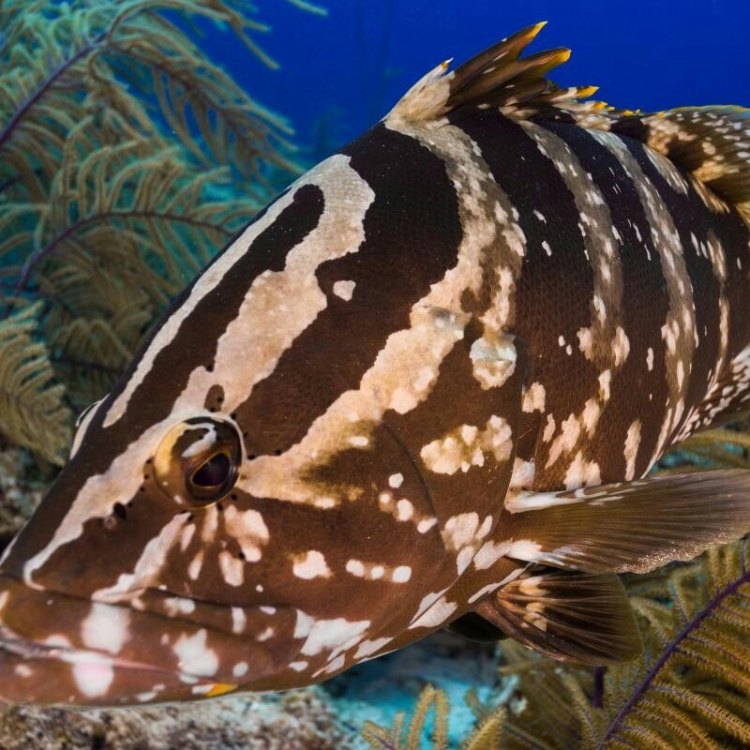
The Fascinating World of Groupers
Disclaimer: The content provided is for informational purposes only. We cannot guarantee the accuracy of the information on this page 100%. All information provided here may change without prior notice.





